Depression is general term for a category of mental health issues known as depressive disorders. Common symptoms of depressive disorders include deep sadness and feelings of hopelessness.
Understanding Depression
Learn about depression
Cognitively, individuals who suffer from depression may have problems focusing or maintaining interest in things or activities. Physical symptoms can include fatigue, sleep disturbances, and appetite changes.
The two most common forms of depression are major depressive disorder and persistent depressive disorder. Major depressive disorder presents severe symptoms that have a debilitating impact on the sufferer’s life and can occur in episodes. The minimum length of time for an episode to be considered one related to major depressive disorder is two weeks.
Persistent depressive disorder (which is sometimes referred to as PDD and which was previously known as dysthymia) involves similar yet less severe symptoms that last for at least two years. A person who struggles with persistent depressive disorder may experience periods of ongoing depression.
Other types include disruptive mood dysregulation disorder (DMDD), premenstrual dysphoric disorder, substance/medication–induced depressive disorder, and depressive disorder due to another medical condition.
Most everyone will occasionally feel temporarily down, melancholy, or otherwise “depressed” as a result of the stresses, pressures, setbacks, and frustrations of everyday life. However, those who suffer from a depressive disorder will experience symptoms that are so severe that they will impact the sufferers’ ability to work, participate in healthy relationships, and otherwise attend to the expectations and responsibilities of one’s life.
Most depressive disorders respond well to treatment. Therapy and medication have proved to be successful means of helping to alleviate the symptoms experienced by those suffering from depression.
Statistics
Depression statistics
Depressive disorders are among the most common mental health conditions in the United States and many other nations. Experts estimate that more than 120 million people around the world suffer from some type of depressive disorder. In the United States, the Anxiety and Depression Association of America (ADAA) reports that major depressive disorder is the number one cause of disability among individuals aged 15-44.
Depression can occur at virtually any age, but data collected by the U.S. Census Bureau indicates that age 32 is the median age of onset for a depressive disorder.
A study published in the Archives of General Psychiatry estimates that about 7 percent of all adults in the United States (or 15 million men and women aged 18 or above) currently struggle with major depression. Unfortunately, the U.S. Centers for Disease Control and Prevention (CDC) estimate that only 20 percent of depressed individuals get professional treatment for their disorders.
Causes and Risk Factors
Causes and risk factors for depression
A depressive disorder can result from many internal and external influences acting alone or in combination. Experts have identified biological, genetic, physical, psychological, and environmental factors that can lead to or exacerbate various forms of a depressive disorder. Consider the following:
Genetic: Depression appears to have a strong genetic component, with some studies suggesting that children of depressed parents are as much as 50 percent more likely to suffer from a depressive disorder than are individuals who do not have a family history of mental illness. Some depressive disorders (such as premenstrual dysphoric disorder) are closely associated with hormonal changes in the body. Menopause and certain thyroid conditions have also been identified as biological/genetic precursors to depression.
Environmental: Stress and pressure are two environmental influences that are strongly associated with the development of several types of depressive disorders. Experts believe that both chronic and acute stress can lead to a major depressive disorder or contribute to persistent depressive disorder. Experiencing trauma (such as abuse, assault, life-threatening illness, severe accident, or the loss of a loved one) can also be a precursor to depression. In the case of substance/medication induced depressive disorder, both the substance itself and any external concerns that led to the substance use itself can be considered environmental influences on the development of the disorder.
Risk Factors:
- Family history of depression
- Family history of other mental health disorders
- Family history of a substance use disorder
- Personal history of prior mental health disorders
- Personal history of a substance use disorder
- Gender (Depression is more common among women)
- Poverty
- Serious illness
- Trauma
- Taking certain medications
- Major life change or other stress
- Inadequate support system
- Age (Depression is a particular concern among older adults)
Signs and Symptoms
Signs and symptoms of depression
Depressive disorders can manifest via a wide range of symptoms, including some that appear to be at odds with each other. For example, some depressed individuals struggle with insomnia (inability to sleep) while others have a problem with hypersomnia (excessive sleeping).
The following are among the more common symptoms that are associated with the various forms of depressive disorders. Demonstrating several of these symptoms should prompt a consultation with a mental health professional to ensure that a proper diagnosis is made and an effective treatment plan is developed:
Behavioral symptoms:
- Lack of attention to grooming and hygiene
- Isolating oneself from family and friends
- Multiple unexplained absences from work and school
- Showing no interest in issues or activities that were once of great importance
- Out-of-character emotional outbursts
- Discussing and/or attempting suicide
- Engaging in reckless or otherwise dangerous behaviors
Physical symptoms:
- Low energy, fatigue, and persistent exhaustion
- Insomnia (inability to sleep)
- Hypersomnia (excessive sleeping)
- Loss of appetite
- Increased appetite
- Drastic weight loss or gain
- Stomachaches and headaches
Cognitive symptoms:
- Inability to focus
- Problems making decisions
- Difficulty solving problems
- Suicidal ideation
- Inability to control persistent negative thoughts
- Distractedness
Psychosocial symptoms:
- Anger and irritability
- Unexplained feelings of guilt
- Self-hatred
Effects
Effects of depression
It is difficult to overstate the negative impact that depression can have on a person’s physical, mental, emotional, and socioeconomic wellbeing. The following are among the more common effects of depression:
- Job loss due to poor performance
- Disrupted personal relationships
- Substance abuse
- Suicidal ideation and attempts
- Risky, dangerous, or otherwise desperate behaviors
- Sense of hopelessness, guilt, and self-hatred
- Financial problems
Co-Occurring Disorders
Depression and co-occurring disorders
Many people who struggle with depression are also dealing with other issues that either led to or were caused by the depression (for example, attempting to “self-medicate” the effects of depression with alcohol or other drugs can lead to addiction).
The following are among the disorders that are commonly experienced by people who are also dealing with a depressive disorder:
- Substance use disorders
- Posttraumatic stress disorder (PTSD)
- Anorexia, bulimia, and other eating disorders
- Attention-deficit/hyperactivity disorder (ADHD)
- Anxiety disorders



